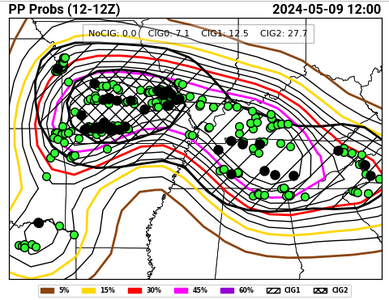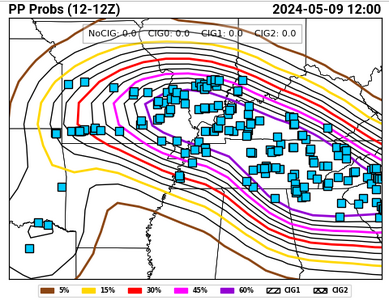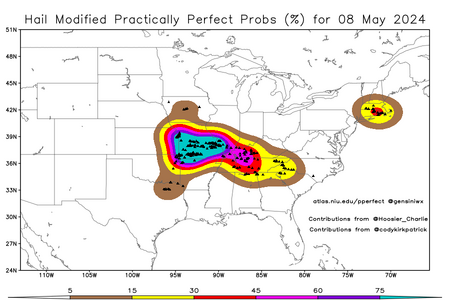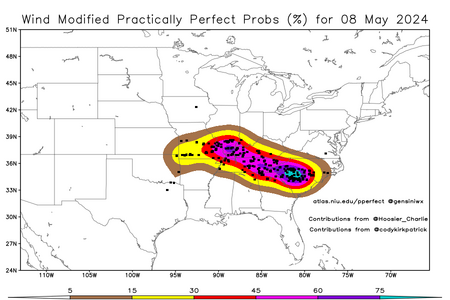Jesse Risley
Staff member
I cant get to the page. is there another link? and is there any information on what's being used to produce this?
I cant get to the page. is there another link? and is there any information on what's being used to produce this?
Oh, oops: SPC Practically Perfect Hindcastyou sent me the link to MAUL lol , I was talking about the practically perfect Probs
It's a risk, doesn't mean when it doesn't happen it's wrong. They assign high fire danger risk in forests all the time, no one goes back and says bust if a fire didn't occur on a particular day.
This is what I mean:Yesterday's High risk forecast was a bust. I don't see how you can't justify that.
This is what I mean:
is it a bust in skill/accuracy of the watch polygon? ehem, parallelogram......or, is it a bust in reports to spatial coverage of the high area? or to the specifics of you didnt get but 1 EF-3 or higher! you suck!! lol.... you mention how it was superseded in count on a previous forecast, so, it seems to me like, we look to verify forecasts, we do that now with reports so if we were to somehow link that, say..... (Marginal = 5-9 reports ; Slight 10-19 reports; Enhanced 20-29 reports; MDT 30-49 reports; High 50+) its arbitrary just for discussion, and the reports are aggregate totals inside of the spatial area of coverage for each, not separated into each category, it seems like this would be the easiest way to see if an area Hit or Missed
Kind of funny how we treat the weather risk communication after the fact as opposed to say fire danger risk or other areas where danger can occur.
It's a risk, doesn't mean when it doesn't happen it's wrong. They assign high fire danger risk in forests all the time, no one goes back and says bust if a fire didn't occur on a particular day. Climbing Mount Everest is a high risk, but if climbers didn't die on a particular day, no one says the risk didn't verify.
I understand that people modify their days based on weather forecast communication. But, there was an inherent danger yesterday, it just wasn't realized on a mass scale.
Is the forecast made to predict tornadoes (quantity, size & type) or to communicate the risk (or danger) associated with them if they occur, or both?
Seems to me, the (very good) chance was there, right or wrong after the fact. Maybe someday they'll reach a point in forecasting where it's called "High Probability".




